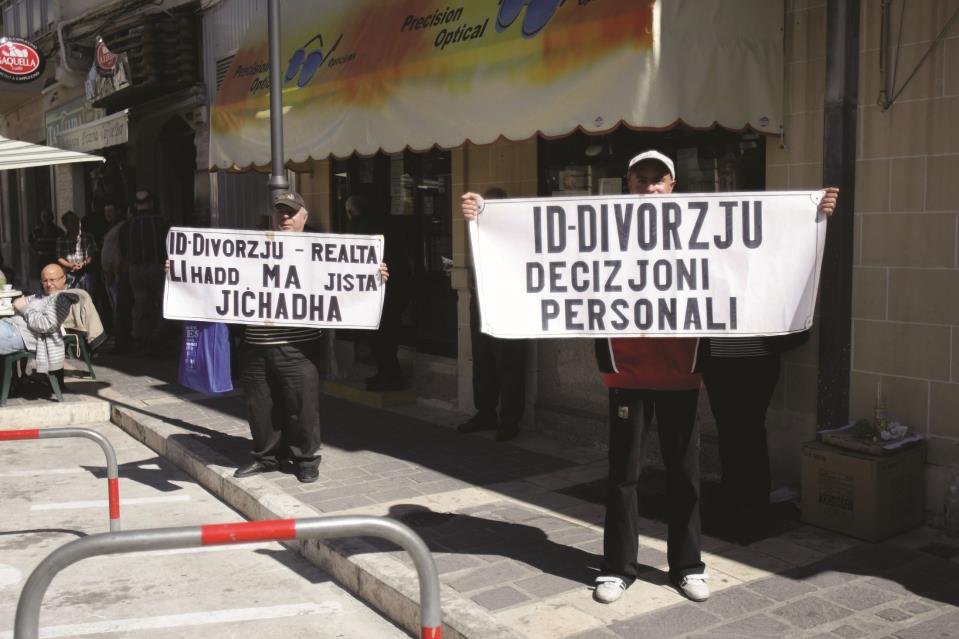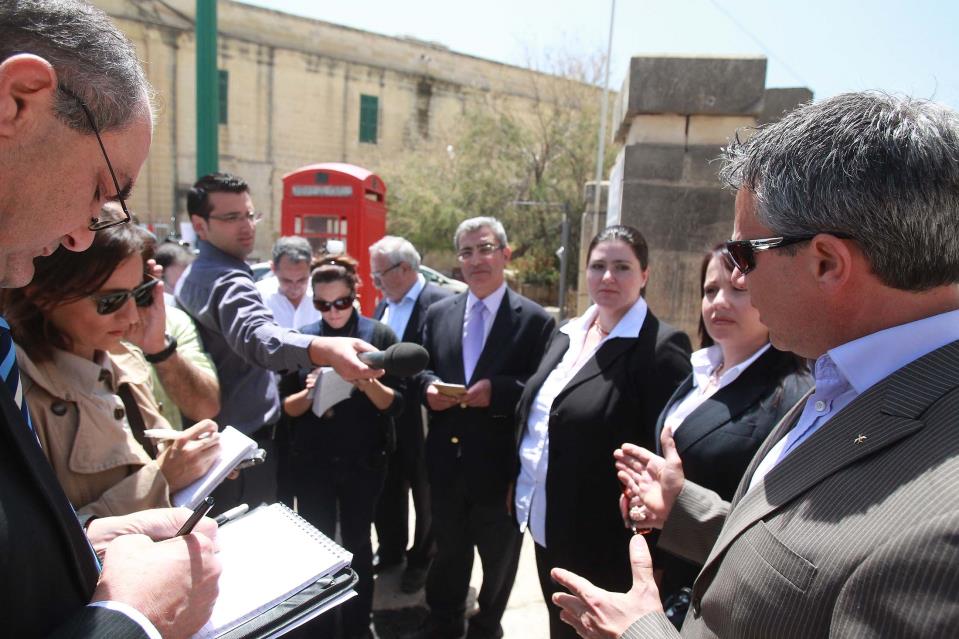It has been 10 years since a referendum paved the way for the introduction of divorce legislation in Malta.
Until then, only legal separation had been acknowledged by Maltese Civil Courts, which meant that couples could not free themselves of each other completely in the eyes of the law. They could move out of the matrimonial home, establish new relationships, but they were still legally married to their original partner.
This started to change on 28 May, 2011, when a referendum was held and the majority of the Maltese voted to legalise divorce. Parliament had then approved the law – not unanimously, in spite of the decision made by the people – and divorce became law on 1 October of the same year.
Now, 10 years down the line, the government is proposing changes to update the 2011 legislation, making it easier for couples to legally dissolve their relationship and start a new one, which they can then also legally formalise.
The position of the Church, before and after the referendum, remains clearly against the dissolution of marriage. Within the Church confines, a marriage can only be annulled, which would technically mean that it never existed. Couples who are legally divorced but were married in the Church are still considered to be a couple by the Church, unless the marriage was annulled by the Church administration.

How it started
For many years, Malta was the only European country where divorce was not legal. Couples could separate, but not divorce. This pushed many to seek to end their marriage abroad, and this divorce was later recognised in Malta. But the expenses involved meant that only a small number of people could afford to go through the legal procedures abroad.
The ball started to roll when then Nationalist MP (a Labour Party candidate in the last election) Jeffrey Pullicino Orlando presented a private member’s bill to legalise divorce in July 2010. This was the second attempt by a Maltese parliamentarian to introduce divorce in Malta. In the 1990s, then Labour MP Joe Brincat had also come up with the idea, but his bill had been rejected.
Pullicino Orlando, then already at loggerheads with his party, had rocked the political landscape, and there followed a year of heated debate. The PN MP had been joined in his quest by his then political adversary Evarist Bartolo, and the two had teamed up to push forward the idea that Malta should free itself of the label of being the only European Union country where divorce was not allowed.
Needless to say, the Church had entered the fray, very much an interested party, and had campaigned heavily against the idea. Bernard Grech, today Opposition Leader, was one of its main spokesmen as the Church sought to use laymen in its bid to convince the voters that divorce would be bad for Malta and cause more problems, rather than solve, to Maltese families and society in general. The Church mounted a strongly-funded drive and used its pulpits to voice its concern about the consequence of divorce legislation, realising too late that it had gone overboard with declarations than hindered, rather than helped, its cause.
In general terms, the run-up to the referendum saw the Nationalist Party, with the exception of the divorce promoter Pullicino Orlando and a few others who privately supported him, against the proposal; while the Labour Party was almost fully behind the suggestion. With today’s benefit of hindsight, the divorce referendum was one of the initial signs that exposed the fragility of the Nationalist Party while it solidified its Labour adversaries, a situation that was further exacerbated in the following years when the PL, once in government, moved ahead with its liberal ideas on civil rights while the PN stuttered to get to grips with the changing landscape.

The referendum
The vote was taken on 28 May, 2011.
Turnout was much lower than that for general elections. With 71 per cent of eligible voters casting their preference, it was more like a turnout for local council polls.
In all, 232,691 voters from the 325,102 eligible voted, with 122,547 saying yes to divorce (53.16%) while 107,971 voting against (46.84%). There were 2,171 invalid votes.
The terms of the referendum were that divorce was to be granted only if the marriage is deemed irreparable and the couple have been separated for four years.
Soon after voting had ended, and before the counting process had started, the Church had issued a statement in which it expressed regret “if anyone may have felt slighted by any words or actions expressed by members of the Church; from our part, we unconditionally forgive all those who may have hurt us.” It was, more or less, an apology from the Church, which then had Mgr Paul Cremona as Archbishop.

The Parliament vote
With the majority of people choosing to have divorce legislation, the matter was taken before Parliament.
But there was no unanimous approval by the House of Representatives, with conservative MPs choosing to stick to their position against divorce and voting against the legislation as presented and, by so doing, going against the will of the people. Others chose to abstain.
When the vote was taken on 26 July, 2011, 52 of the 69 MPs at the time voted in favour of the law. The law, in its third reading, was passed mostly with the votes of the then Labour Opposition, with 33 of the 34 Labour MPs voting in favour. On the Labour side, the only dissenter was Adrian Vassallo, who did not attend the sitting when the final vote was taken.
The PN MPs, as said earlier, were more divided on the issue, and only 19 of the then 35 representatives voted in favour. Conversely, there were 11 PN MPs who voted against the divorce legislation, while another five abstained.
The ones who voted against were Lawrence Gonzi, Carmelo Mifsud Bonnici, Austin Gatt, Tonio Borg, Giovanna Debono, Jason Azzopardi, Frederick Azzopardi, Louis Deguara, Beppe Fenech Adami, Philip Mifsud and Edwin Vassallo.
The MPs who abstained were Tonio Fenech, Mario Galea, Clyde Puli, Francis Agius and Peter Micallef.
Some MPs changed their vote between the second and third (final) reading of the bill. In the second reading, the bill had earned the approval of 44 of the MPs, with 13 voting against and 12 abstaining.

The aftermath and numbers
The latest available statistics published by Eurostat show that Malta has the lowest divorce rate in the European Union, figures that show that fears of a total collapse of our society once divorce is made legal have not materialised.
Malta has only 0.7 divorces per 1,000 persons, statistics published in 2020 show. We are at par with Ireland, which registered the same rate.
Slovenia, with a divorce rate of 1.1, and Italy, Croatia and Bulgaria, all on 1.5, follow.
At the other end of the scale, Latvia and Lithuania top the list with 3.1 divorces per 1,000 people, followed by Denmark on 2.6 and Sweden on 2.5.
The average divorce rate across the European Union is two divorces per 1,000, more than double the 0.8 rate registered the first time such records were kept in 1965.
The way forward
Ten years after divorce was legalised, the government is now proposing changes to the original law in a bid to make it easier for couples wanting to part ways.
As things stand now, spouses need to have lived apart for four of the previous five years at the time they file for divorce, or four years have elapsed since the date of their legal separation. The court must also be satisfied that there is no possibility that the two partners can reconcile.
The government now wants to reduce the waiting time. The bill that is before parliament creates a distinction in the time period before a request for divorce is filed by couples who are already legally separated and others who are no longer living together. This also depends on whether the request is submitted by one of the parties, or both.
The new bill lays down that when a couple is already legally separated through a court sentence or contract, there should be no waiting period before a request for a divorce is filed. In cases when the couple is only de facto separated, and the request for divorce is made by both, the time will be reduced to six months of the preceding year. In cases when only one of the partners files for divorce, what is being suggested is that the time lapse should be one year from the preceding two years.
The Labour Party in government is pushing for these changes to go through, while the Nationalist Party is seeking further amendments, such as the idea to have couples filing for separation and divorce at the same time.
Speaking in Parliament recently, Opposition Leader Bernard Grech – who had opposed the introduction of divorce in 2011 – said the law discriminates between couples where both parties agree to divorce and those where only one files to break up the marriage.
A look back
These past ten years have taken Malta in line with other European countries where divorce has been allowed for more decades.
While it is understandable that a divorce is a stressful time for the couples involved, as well as their immediate relatives and, of course, the children (if any), it eventually does help the individuals concerned move on to a (hopefully) better life, perhaps with a new partner.
Before divorce was legal, individuals in failed marriages were constrained to continue to live their life in an unhappy relationship which no longer existed except for the legal links that remained in place. The possibility that these legal connections can now be dissolved has opened the way for individuals who were trapped in no-longer wanted relationships to start afresh.